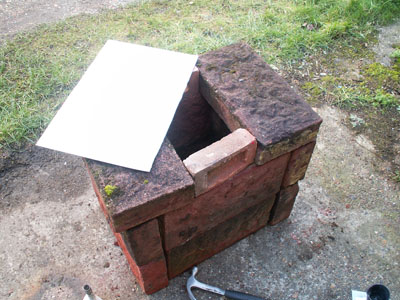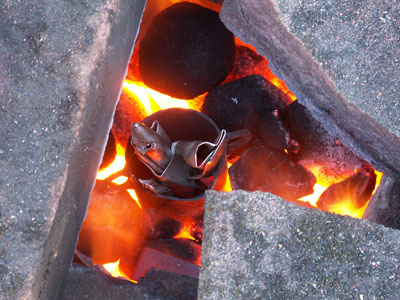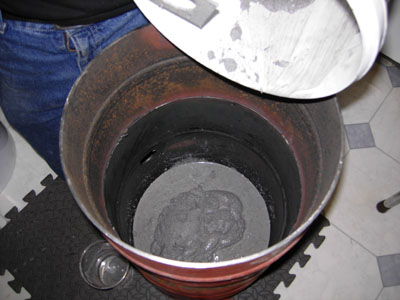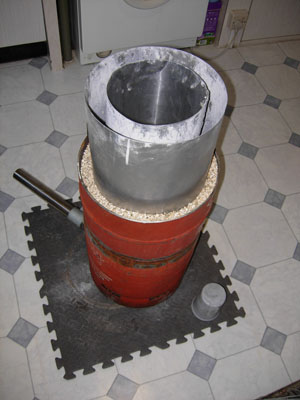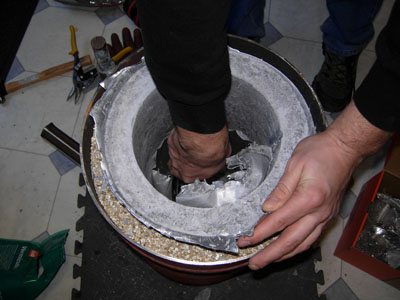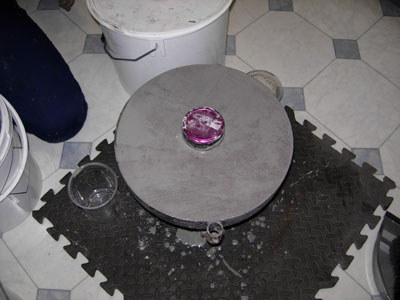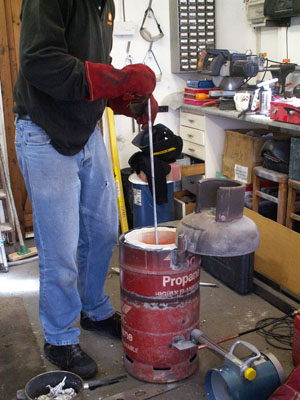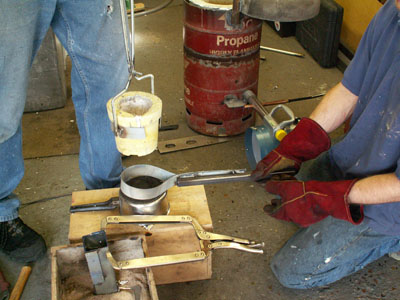Mark Thomas's Website
Current: /Other/Workshop/Metal Casting

Menu:
Metal Casting
Contents
Early Attempt
Being the impetuous pair we are, Palo and I were keen to get the feel of melting and pouring metal before committing to building a proper furnace. We began with a pile of bricks which contained a perforated sheet steel shelf, upon which sat a pile of charcoal, using an air supply from a 2 hp hobby compressor.
The design was suitable for melting aluminium:
Although capable of melting aluminium, it became clear that the choice of fuel, the single-course brick insulation and the high-pressure, low-volume air supply were not best-suited to metal casting.
Gas Furnace
Our second attempt came in the form of a pair of 13 kg propane cylinders that had been welded together to form a tall combustion chamber that would eventually be fired by propane. The outside dimensions are ~400 mm, containing an 40 mm refractory lining and an 40 mm vermiculite insulation layer. Here we are pouring a castable refractory lining in the base of the furnace. There is a wide selection of castable refractory materials available; we used 'Vitcas Standard Dense 1700°C' in the hope that it would eventually be capable of melting iron.
The refractory lining was poured into a mould made from a pair of aluminium cylinders with holes cut to allow a 1.75" stainless tube for the air and fuel supply. A refractory plinth was also cast from a plastic measuring cup, upon which a crucible will eventually stand.
It is not necessary to remove the outer layer as it has no effect on the combustion chamber. Removing the inner chamber proved to be more difficult than anticipated, despite having covered it with petroleum jelly prior to pouring the refractory; it may have been more straightforward to leave the liner where it was and allow it to melt when the furnace was first fired.
The top of the cylinder was cut off and filled with refractory around a glass jar to form an exhaust hole. Much like the inner aluminium liner, the glass former proved difficult to remove, even when broken with a hammer. The lid is hinged on the diameter to allow access to the combustion chamber.
The finished furnace can be seen below. Fuel is supplied from a regulated propane cylinder through a 1 mm orifice in a 15 mm copper pipe inside the 1.75" stainless tube. Air is supplied by a 200 W blower that sets up an anticlockwise airflow inside the cylindrical combustion chamber. At this point the air, fuel, burner diameter and burner length are not optimal and will need tuning in the future.
A refractotry crucible was made using a pair of dissimilarly-sized plastic flower pots. We made some crude crucible tongs and a pouring handle from mild steel which have worked well so far and will be made more carefully in the future. At full power, a crucible of alumiuim is ready for pouring in 12–15 minutes, by which point the heat capacity in the refractory lining is enough to melt a second full crucible without firing the blower (though admittedly not hot enough for pouring).
